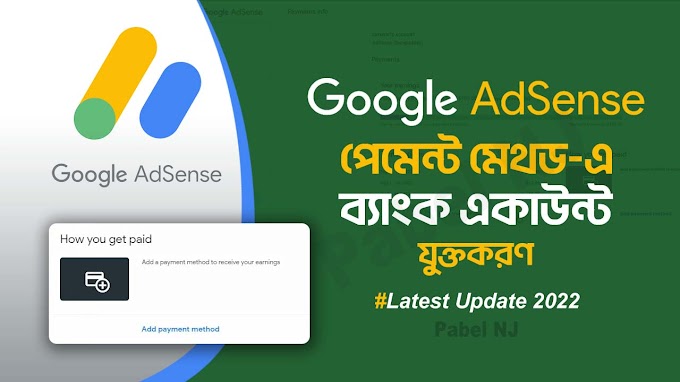Designing a logo that captures the authentic essence of your brand starts with understanding the many types of logos that are out there.
Your logo is your company’s stamp on the world, after all, a visual symbol chock full of meaning that can, in an instant, reveal everything from brand positioning to brand personality.
Choosing the right type of logo is the first step in creating a mark that will serve as both a critical first impression and constant signifier of what your brand is about.
Below, we’ll take a look at 10 different logo types—each of which offers a unique way to speak volumes about your brand—and give you some tips on how to choose the logo style that’s right for your business.
What is a Logo?
A logo is a visual signifier used by an organization or individual to represent its brand. A logo may include typography, a symbol, or some combination thereof in communicating the essence of a brand in a distinct and memorable way.
The best logos are simple, scalable, and unforgettable. They speak volumes without saying much at all.
Importantly, a logo is not a brand, and a brand is not a logo. A logo is one component in a brand’s visual identity: a complex system of colors, typography, imagery, and aesthetic style.
What are the 10 Different Types of Logos?
The different types of logos include a range of styles. From text-based to image-based, literal to symbolic, static to dynamic, there’s no shortage of successful logo styles.
We classify 10 different types of logos, but these categories aren’t meant to be exclusive or definitive. Some logos straddle the line between categories or even incorporate more than one style.
Whichever logo style you choose for your brand, your decision should be calculated and deliberate—ideally based on customer research and in-depth brand strategy. Different logos have different effects, after all, so choosing wisely is well-advised (more on that below.) First, let’s take a closer look at the 10 different types of logos.
The 10 Types of Logos:
- Combination Logos
- Wordmark Logos
- Letterform Logos
- Monogram Logos
- Abstract Logos
- Mascot Logos
- Emblem Logos
- Dynamic Logos
- 3D Logos
- Animated Logos
01. Combination Logos
Combination logos incorporate both a wordmark and a symbol. This is the logo type that most people think of when they think of a logo—but that doesn’t mean it’s always the best choice.
The wordmark and symbol in a combination logo can be laid out side-by-side, stacked on top of each other, or integrated together in an image. Because they incorporate both a wordmark and a symbol, combination logos are typically easier to trademark than symbols alone.
Combination logos offer the benefit of immediately associating your brand name with a meaningful symbol. The downside to combination logos is that they can easily get overly complicated, losing the simplicity that is the hallmark of a strong logo.
Examples of combination mark logos include: Pizza Hut, Target, Converse, Dropbox, PayPal, Spotify, Mastercard, Pepsi, Rolex.
02. Wordmark Logos
Among the many different types of logos, wordmarks are the literary stalwart. A wordmark comprises a standalone word or words (your brand name), and should be easy to read while featuring a highly distinctive typeface.
In this sense, a wordmark is arguably the simplest form of brand expression. It doesn’t rely on symbolism, but rather on a meticulous fine-tuning of character dimensions and kearning. That said, wordmarks are sometimes conceptual or pictorial in nature, representing an idea beyond just the name they spell.
Whether you’ve noticed it or not, the FedEx wordmark features an arrow in the whitespace between the final two letters. Deftly suggesting forward movement and progress, the subtlety of the symbol is in fact its most powerful characteristic.
Examples of wordmark logos include: Braun, Aetna, Facebook, IBM, Coca-Cola, Stripe, Cartier, FedEx, and NASA.
03. Letterform Logos

The leaner, more minimalist cousin of the wordmark, letterform logos feature a singular letter to graphically represent a brand. Because they are freestanding and don’t constitute a complete word or message, letterforms must cultivate a bold brand personality.
Successful letterforms come to automatically and unconsciously evoke the full brand name in the mind of consumers. Yahoo’s “Y” and Westinghouse’s “W” are each fine examples of this type of logo.
Advantages of letterforms include their scalability; because they incorporate minimal elements, they can easily be reduced for purposes of app icons, social media, and the like.
Examples of letterform logos include: Motorola, Yahoo, FourSquare, Westinghouse, SeaTrain Lines, Univision, Vanderbilt University, AirBnB, and Uber.
04. Monogram Logos

While letterform logos feature a single letter, monogram logos or lettermark logos (not to be confused with letterforms) consist of multiple letters, usually the brand’s acronym.
From IBM to HBO to YSL, monograms have long extended the simplicity of an acronymic name to a brand’s visual identity, with varying levels of sophistication. The downside of a monogram logo is that, while simple, they can sometimes be difficult to read and harder to remember.
Acronymic names are saddled with these challenges to begin with, and incorporating them into a visual identity often only exacerbates the problem. Some of the world’s top brands have obviously made the monogram logo work for them, but we wouldn’t recommend it (or an acronymic name) for a company just starting out.
Examples of monogram logos include: New York Yankees, PlayStation, Louis Vuitton, Proctor & Gamble, London Symphony Orchestra, HP, Victoria and Albert Museum, Channel, and H&M.
05. Abstract Logos

Abstract logos draw on the power of imagery to connote the core tenets of the brands they represent.
Whether they feature an easily recognizable pictorial image or a more abstract and ambiguous form, abstract logos should be simple yet significant, and make the most of shading and negative space.
As is often the case in brand design, when it comes to abstract logos, the simpler the design the more difficult it is to execute. Because they’re somewhat ambiguous by nature, abstract logos are particularly effective for multi-divisional, service-based, and technological brands.
Examples of abstract logos include: Merck Sharp & Dohme B.V., Time Warner Cable, Darien Library, Twitter, Apple, NBC, World Wildlife Fund, Starbucks, and PBS.
06. Mascot Logos
Spotting a mascot logo among the different logo types is as easy as asking whether or not it incorporates an illustrated character of some sort. The mascot of mascot logos is generally the whimsical protagonist of a company’s brand story.
From KFC to Pillsbury to Pringles, some of the world’s most successful brands have humanized their products with lovable characters featured front-and-center in their logos.
Mascot logos are great for family-friendly brands looking to appeal to children, but they increasingly feel tied to a bygone era of advertising. For companies looking to imbue any sense of seriousness into their brand, mascot logos are obviously ill-advised.
As with all combination logos, mascot logos can easily become overly complicated and often present problems when it comes to scalability.
Examples of mascot logos include: KFC, Nirvana, Android, Lacoste, Toronto Blue Jays, Michelin, Green Giant, Quaker, and Denver Broncos.
07. Emblem Logos
When a wordmark, letterform, or abstract logo is housed within a shape that is an essential part of its identity, it is an emblem logo.
Emblem logos often contain multiple elements, but when choosing this type of logo, it’s wise to maintain simplicity as your ultimate goal.
Similar to mascot logos, the downside to emblem logos is scalability. Because the typeface or image of the mark is, by definition, contained within a fixed space, these elements can become illegible as the logo is reduced for purposes of mobile or other small media.
Examples of emblem logos include: Design Within Reach, Toms, Converse, BMW, Bugatti, NHL, Harley Davidson, UPS, and Perrier.
08. Dynamic Logos
When it comes to branding, the words “online” and “digital” are quickly becoming tautological. There are fewer and fewer instances where your logo is not presented via digital media.
This means that logos are no longer constrained by the static nature of print. They can move and morph and even take the form of miniature narratives. Enter the dynamic logo, a mark defined by its changing, digital nature. Of the many types of logos out there, dynamic logos are among the most modern.
When Casa Da Musica, Portugal’s Rem Kohlhaas-designed music center, needed a versatile identity, they turned to Stefan Sagmeister, who developed a dynamic logo inspired by the building’s architectural form and featuring shifting perspectives and customizable color palettes.
Examples of dynamic logos include: Casa Da Musica, City of Melbourne, Google, MTV, Nickelodeon, and MIT Media Lab.
09. 3D Logos
Many logos these days refuse to be confined to two dimensions. 3D logos make use of contours and shading to evoke a depth that other logos lack.
As with other types of logos, the effectiveness of 3D logos comes down to execution. On the amateur side of the spectrum, a 3D logo can feel contrived and dated. But when executed with minimalism and restraint, 3D logos can infuse a brand’s mark with a memorable uniqueness.
As we’ve mentioned many times already, the strongest logos are usually the simplest. And adding an extra dimension invariably introduces an extra layer of complexity. That said, brands in technology and design are often good candidates for a 3D logo evoking the hyper-realistic user experiences they bring to life.
Examples of 3D logos include: Renault, Cognizant, Block, Webex, Best Western, Rosetta Stone, UTA, Royal Academy of Engineering, and Conax.
10. Animated Logos

Just as many logos have sloughed off the confines of two dimensions, others refuse to sit still. Animated logos are increasingly popular in the digital age, where movement can be conveyed in a number of different forums.
Animated logos incorporate some element of motion, often conveying an extra layer of meaning in the process. An animated gif like the Medium logo above can be set to play on repeat, or simply play through once during the initial loading of a homepage, for example.
Many brands have an animated version of their logo that they deploy in certain environments. Think of Dreamworks and the dozens of other production companies whose logos come to life in the opening minutes of major motion pictures.
Animation is yet another opportunity for over-complexity, of course. So, it’s important to be strategic with the deployment of your animated logo, if you choose to go this route.
Examples of animated logos include Medium, Mixcloud, Dreamworks, Slack, Amazon, and Snapchat.














